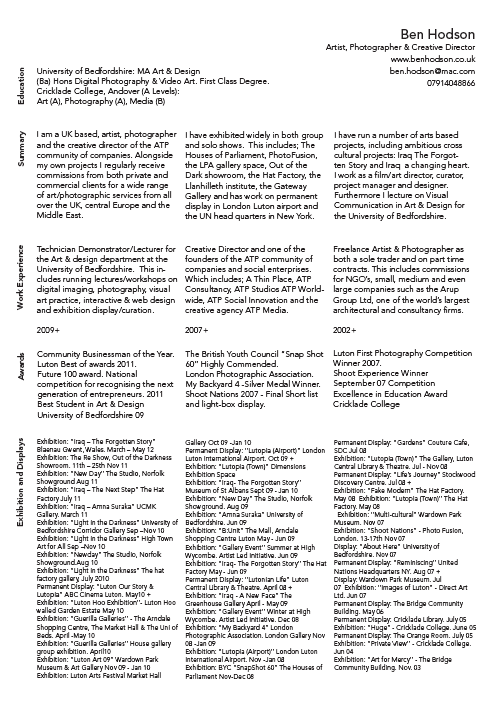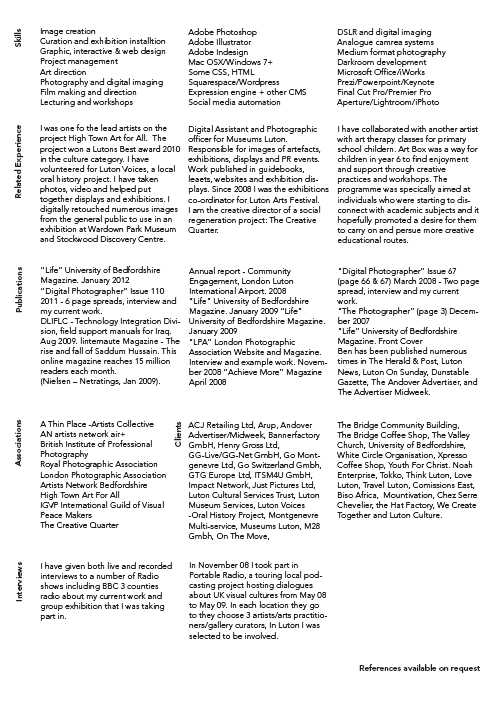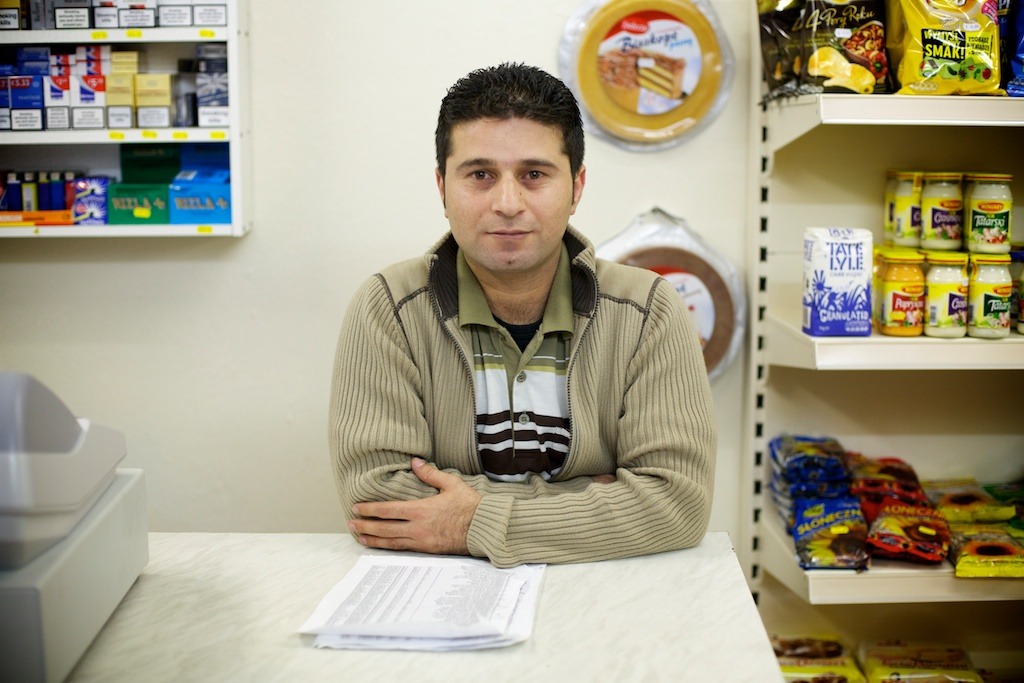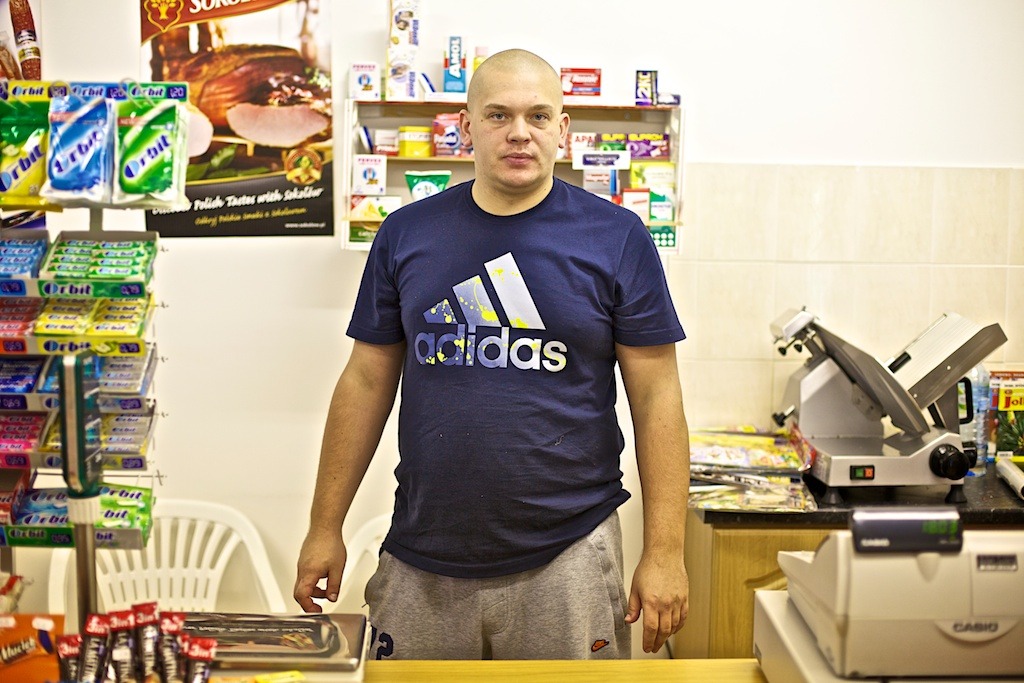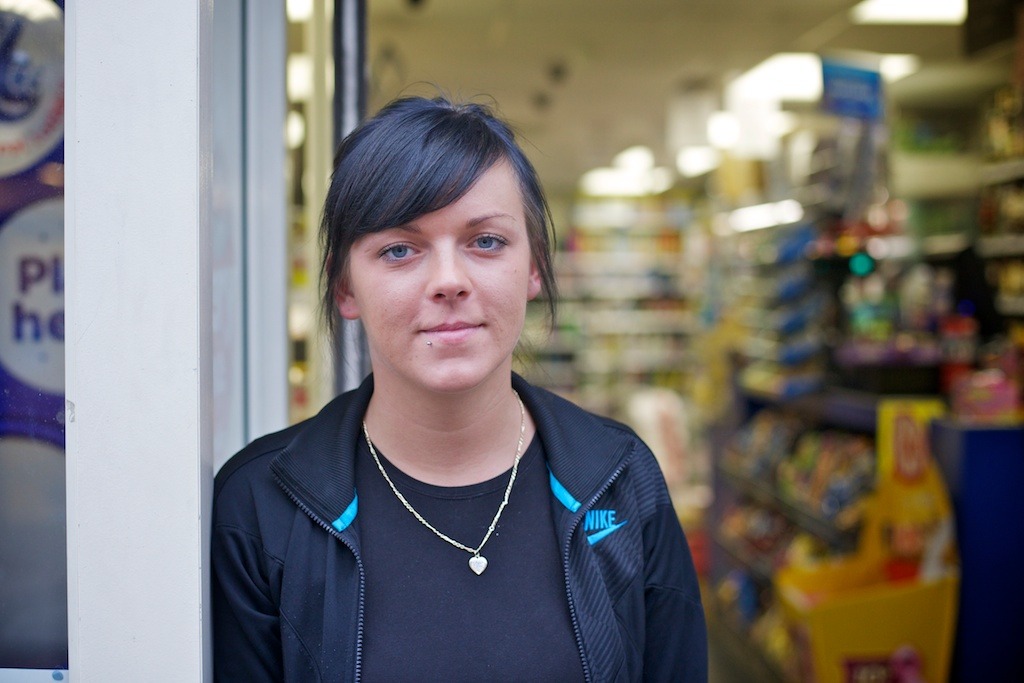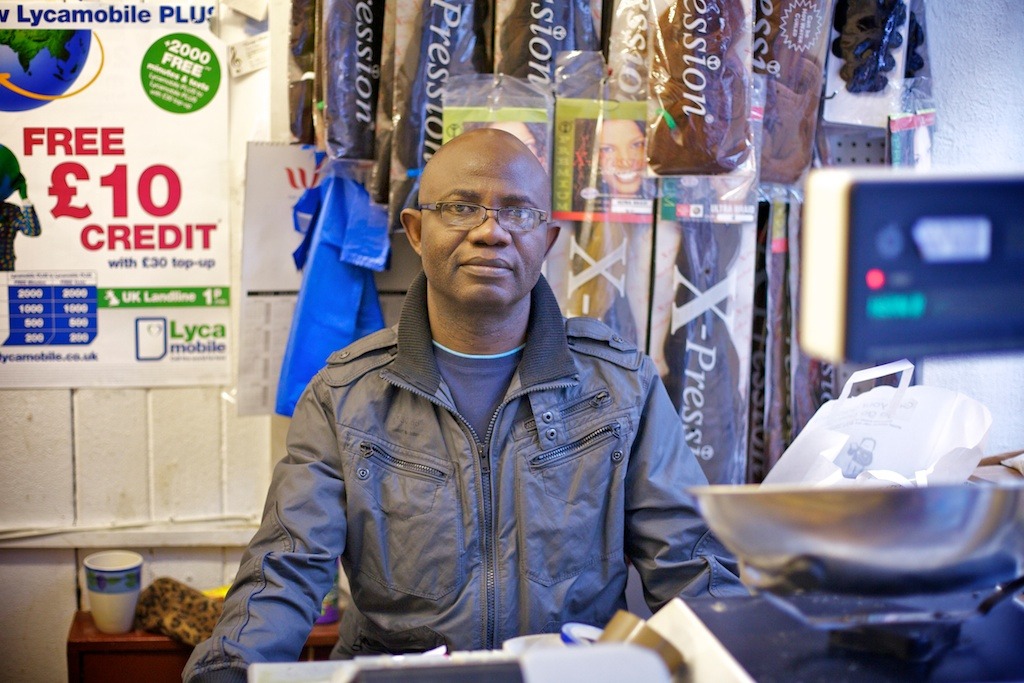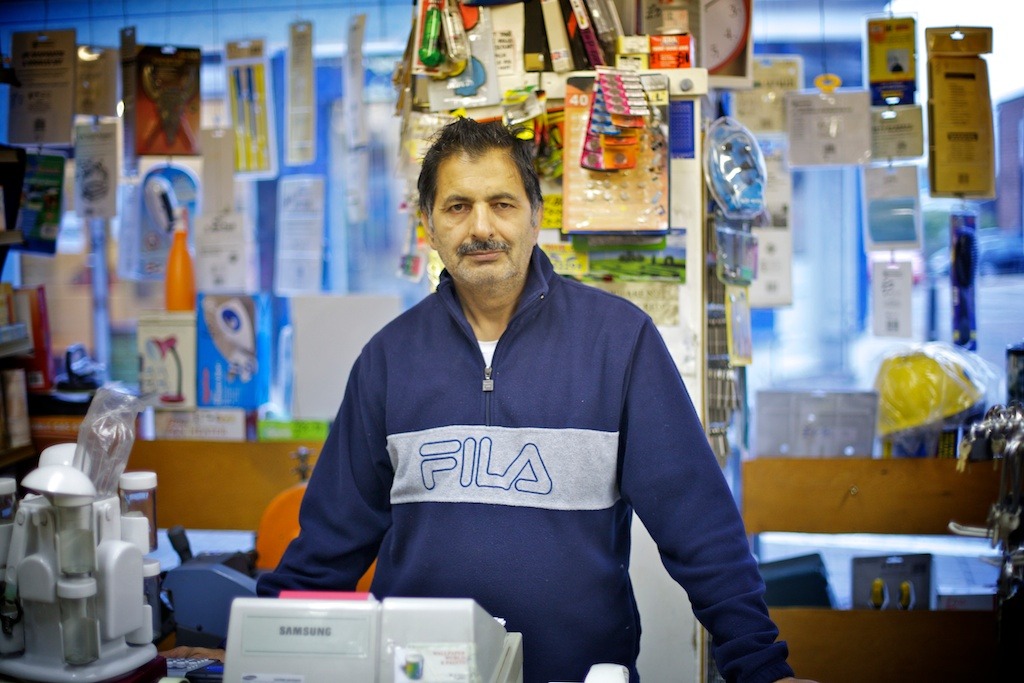Ben Hodson
Creative, business builder & social entrepreneur
Index
Taking over the MA space on the 5th floor

MA students have started to occupy the space on the 5th floor.

I have been preparing the prints for my show in the Ismail Khayat Gallery in Iraq. Due to the challenges over there and the need to transport the exhibition, there are a number of restrictions on the work. This has meant I have had to cut out some of the series and concentrate on the work which will help me accomplish my goals; show work from Luton to people in Iraq, to show them what I have been doing in the UK and to get there responses to both.
Luton Peace Vigil, an artists intervention.
Luton Peace Vigil
Artist intervention and peace making project, this included creating; photography, viral videos, social media, press release, word of mouth. The idea was to intervene in the destructive Luton protests and work to try and use creative ways of difusing the tension and building peace. www.athinplace.org #peaceforluton #lutonprotests
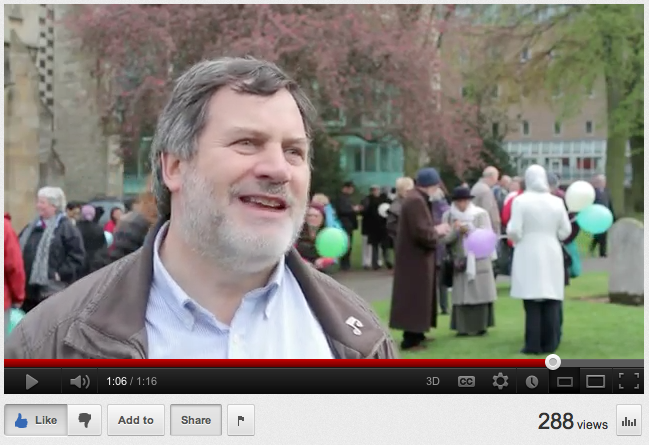
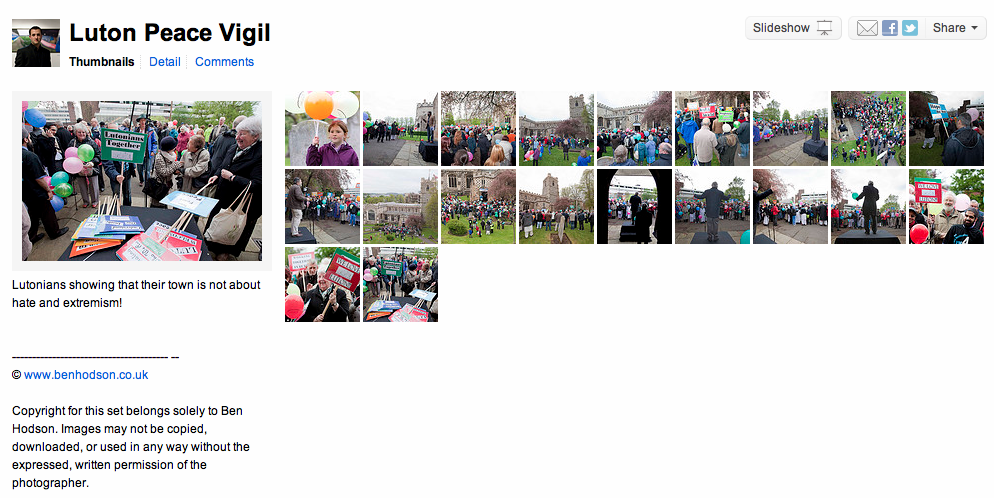
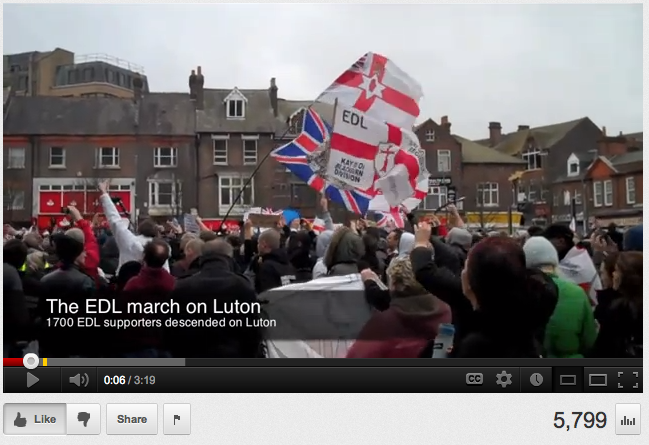
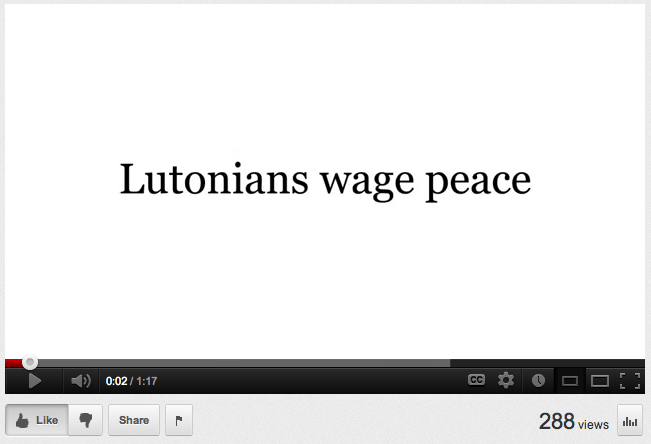
Notes to look up from group crit
In the future of the image
Jack Ranciere
Jeremy Deller
In tangible
Social responsibility
Mustufah
Idea of Detachment
Tutorial with Hannah Birkett
Here are some notes from a tutorial with Hannah Birkett:
Email visual peace making interview to Hannah.
Make a Poster for the Iraq exhibition
What is the right context for the work? Gallery/Media/Street???
Social responsibility is important to my work.
Instagater vs performative
How do you view work?
Look at Ben slow - Street art
Look at Hans Hackke - Banner
Asks a question?
Is Dialogue important?
Don't be cool
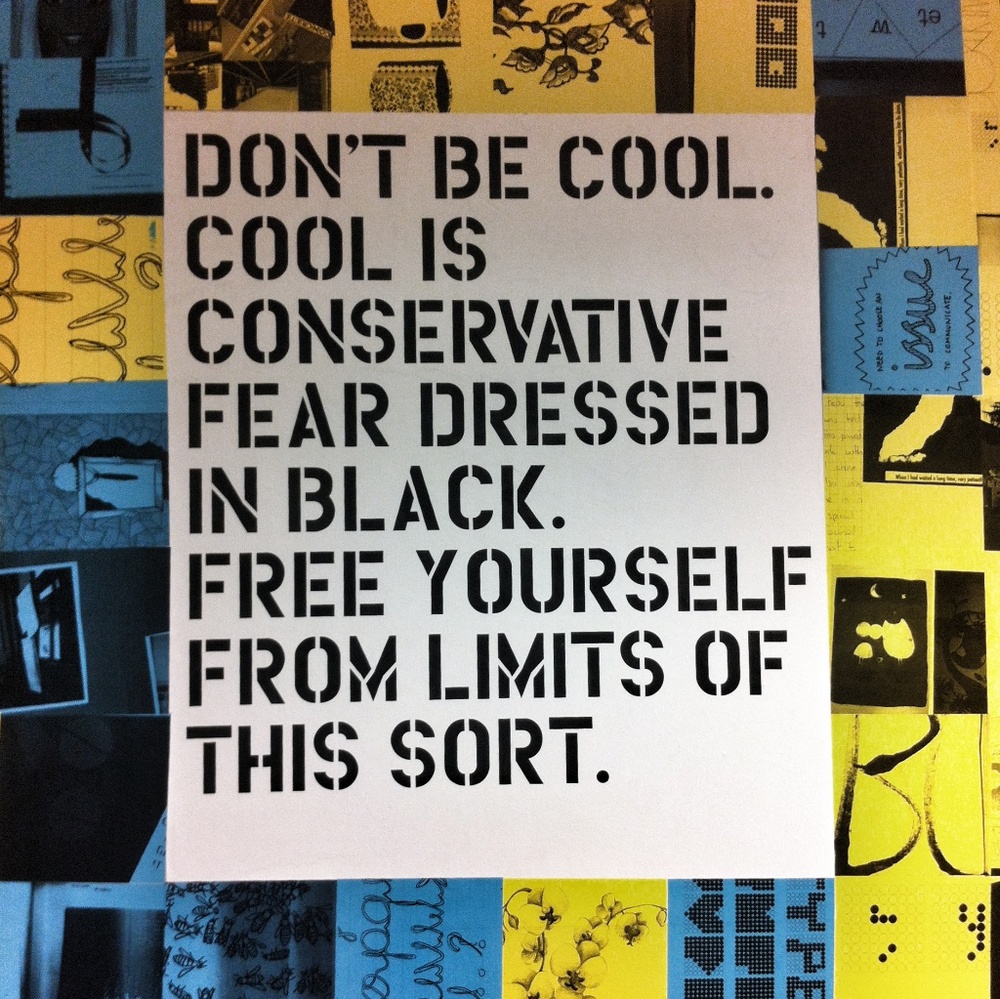
This is a poster up at the University of Bedfordshire, the slogan is from the Incomplete Manifesto for Design. The words, started making me think about my work and how often, I do things because of what other people think. Its not that I am trying to be "cool", but there is a certain element of wanting people to think "wow" when they look at my work. Some of this is due to one of the main points of my work is social responsibility, therefore people hopefully will be affected by what I create and therefore the role of the viewer is important in my work.
Transition Exhibition Video
Transition/Pâreja Exhibition from ATP Media on Vimeo.
Here is a video we made for the Transition exhibition.
Exhibition: Olympic champions from before

This is a local exhibition of portraits of olympic champians from decades a go. The show was interesting, but for me the connection of photography and passing time came accross very strong.
Street art hunt around Shoreditch


After starting to look at the perfomative part of my work, I have started to draww comparisins to street art. There are a lot of interesting cross overs, specifically in notions of intervetion, artist as activist and getting art into peoples view.
Reflecting on my practice
Ben Hodson - My Practice on Prezi
As part of a reflection on my practice, I created this interactive presentation to lay out my practice in a visual format. Using the technology of Prezi enabled me to reflect on the various aspects and draw out some of the most important themes.
Reflecting on my work constructed & photomontages
In my own practice I have been creating slightly more abstract and directly constructed imagery. My series of work “Light in the Darkness” depict a number of locations and more importantly events where light and dark are captured in tension with each other. The process of painting with light forces me to slow the image creation process down. I used over 10 Min exposures, torches, flashguns, assistants and lots of jumping up and down to create these fictional events. The images are carefully assembled from pre-conceived ideas and compositions. The work is inspired by artists such as Jeff Wall or Gregory Crewdson, who are not considered modernist, however, the inclusion of the painting with light technique involves a direct light invention as in the photograms of the modernist photographers. The simplistic and almost abstract compositions that are produced could also reference modernist inspirations.
Another style of work that I have been working on is using montage or more specifically photomontage. As a technique it is very similar to David Hockney’s Joiners from the 80’s, although it also has close associations with some modernist movements. Taking from Cubism’s lead a number of other modern art movements starting working with collage and photomontage. Some of the key artists include; Raoul Hausmaan, Hannah Hoch, John Heartfield (Helmut Herzfelde) and the constructionist Alexander Rodechenko. The format was also used by some of the artists in the Pop Art movement, such as Richard Hamilton, who was known for his re-appropriation of images from popular culture. With my series “Lutopia” I stood in a location and extensively photographed a scene with an exact number of images. These images were then cut up and glued to hardboard.
The large scale photo-montages depict views of in and around Luton. The fragmented works envelope the viewer in a distorted panoramic world that seem familiar yet somehow painterly. The collection makes an enquiry into the photographic image as an object, a self-referring form. Photography has lost its association with the notion of truth. The work does not resist this change, it embraces it. There are many imperfections and repetitions in the work. This is intentional, as it again references the passage of time, fragmentation and the cubist inspirations. More importantly, it shows how I have begun to create and subvert the image to reveal my reality of the place (as a painter would). Although the image is no longer a true photographic representation it remains connected to my interpretation of the truth of the scene. The terms montage and collage are often used interchangeably and both are associated with the early stages of modernism.
MA group crit: 3 pieces of work

A group crit with Hannah Birkett, proved an enagaged and interesting look at some of the recent work my fellow students have been creating. I presented some recent photos, the peace project and an image I made while in wales. We were encouraged not to explain the work and see what people think of the work.
Group crit: Medium is The Message, Process is the Product

Half way throught the process brief, we had a presentation to talk to the group about our processes and to talk about the plans for the rest of the brief.
Contextual and analytical thinking


I had an opportunity to sit in on a lecture for the February start students by Colin Davies and found this illustration for the importance and relationshop between contextual and analytical thinking very helpful.
Artist: Thomas Hirschhorn
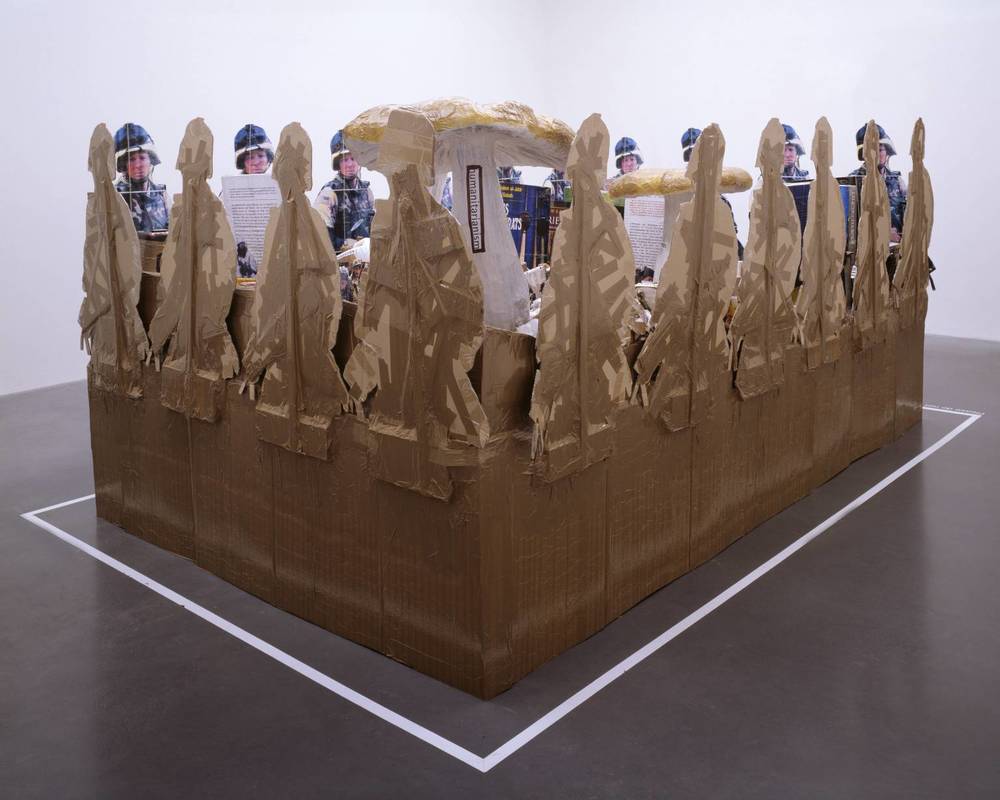
As I look at war artists, I have come across the passionate work by Swiss artist Thomas Hirschhorn. This peice here was shown in the Tate Modern is a politically charged sculpture which comments on the challenges and fragility of everything surrounding the Iraq conflict.
http://www.tate.org.uk/art/artworks/hirschhorn-drift-topography-t11885/text-summary
Hirschhorn creates monumental works from the basest of materials. Cardboard, foil, paper and plastic are bound together with tape, in an apparently casual fashion, to form works that are all the more powerful for their obvious instability. In Drift Topography, a ring of US soldiers surround and stand guard over a densely built-up, fenced-in territory. The soldiers themselves, and the weapons they brandish, are larger than life-sized cardboard cutouts. The landscape they guard is equally unstable – a city built from boxes, card, cotton wool and aluminum foil. Vast quantities of generic brown packing-tape hold the whole structure together. Political and historically significant books line the makeshift streets, alongside rows of plastic petrol cans. Paper billboards bear Arabic script enlarged from newspapers, and the bold text of truncated headlines – ‘war’, ‘power’, ‘humanitarian’, ‘globalization’ – are plastered over every surface, echoing the overuse of such terms by the press to the extent of virtual meaninglessness. Over it all, gigantic mushrooms rise out of the centre of the system, evoking nuclear clouds as much as thriving mutant fungi.
Tate.org.uk Accessed May 2012
The Medium is the Message, the Process is the Product
In looking at my own practice, I decided to deconstruct something I do fairly regularly; take photos/portraits of people while I am in other countries. In looking at what was most important to me, I decided to start shooting portraits of British people, in a very similar way to which I have photograhed people whil abroad.
